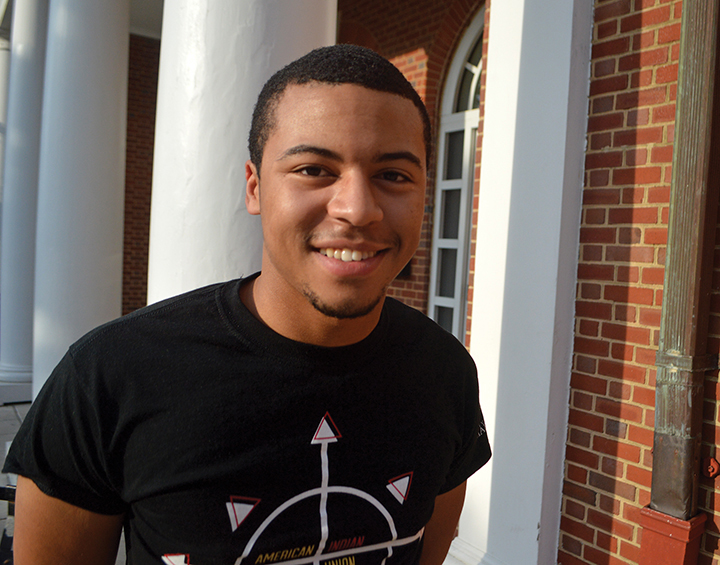When senior Aaron McKay visited a Cherokee reservation during an alternative break trip last spring, he met a 14-year-old boy who told him how much he wanted to go to college one day.
But it seems the odds are stacked against that boy and other American Indian children when it comes to attending college, according to a study the ACT released in March.
Eighty-six percent of American Indian high school graduates express a desire to pursue a higher education, according to the study. But among graduates who took the ACT in 2011, 46 percent do not enroll in college the fall after graduating high school — the highest percentage of any ethnic groups studied.
“They want to go to college, but there’s so much around them in their environment that’s holding them back,” said McKay, a management major who is part Chitimacha, Powhatan Confederacy, Cherokee and Yeocomico.
At this university, American Indians and Alaska Natives make up 0.13 percent of the student population for fall 2013, according to the university’s Institutional Research, Planning and Assessment reports.
Many of the barriers keeping American Indian students from a college diploma are related to economics, McKay said. The poverty rate among Native Americans and Alaska Natives was 28.4 percent in 2010, according to the U.S. Census Bureau.
McKay recalled some children on the reservation had to share toothbrushes with their siblings. Many, he said, were being raised by parents who were alcoholics or abusive.
“It’s not a healthy environment for someone trying to get straight ‘As’ and go to college,” he said.
But the economic issues don’t just affect those on the reservation, McKay said. He had to work and take out student loans to pay for school when his parents couldn’t.
He said many people think American Indians automatically receive large scholarships, but often that isn’t the case.
“If your tribe isn’t recognized federally or by the state, like a lot on the East Coast where I’m from, then you’re not eligible for scholarships,” he said.
Dottie Chicquelo, the assistant director of the Office of Multi-Ethnic Student Education, said there’s also a lack of university outreach.
OMSE is combating that with its annual American Indian Symposium, in which hundreds of K-12 students visit the campus and hopefully leave inspired to return, Chicquelo said.
“For most of the students, it’s the first time they’ve ever been exposed to a college campus, so they’re very excited and eager to learn from other Native [American] students, faculty and staff about the admissions process and financial aid,” she said. “Because of this symposium, several of the students have gone on to college.”
Ed Colby, the ACT public relations director, said preparedness is another issue.
The study highlights disparities in college readiness among ethnicities. In 2013, 10 percent of American Indian high school graduates met college readiness benchmarks in all four ACT-tested subjects — English, reading, mathematics and science. Of the entire graduate population, 26 percent met those benchmarks.
Fifty-two percent of American Indian high school graduates met none of the benchmarks in 2013, according to the ACT study.
“Our goal is to raise awareness that these issues exist, and hopefully we can encourage more students to better prepare themselves for college coursework,” Colby said. “If we can capture those high aspirations and translate it into better preparation, those outcomes may be better in the future.”
The student, who is American Indian, poses for a portrait outside Stamp Student Union on May 12.





